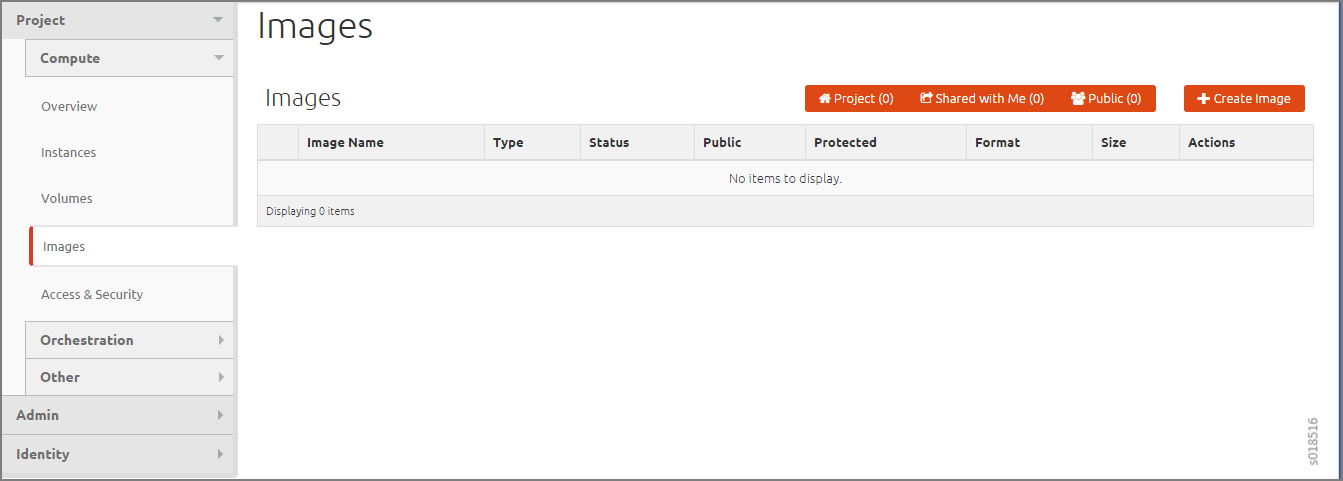- play_arrow Installing and Upgrading Contrail
- play_arrow Understanding Contrail
- play_arrow Supported Platforms and Server Requirements
- play_arrow Contrail Command
- How to Install Contrail Command and Provision Your Contrail Cluster
- How to Login to Contrail Command
- Navigating the Contrail Command UI
- Installing a Contrail Cluster using Contrail Command and instances.yml
- Importing Contrail Cluster Data using Contrail Command
- Adding a New Compute Node to Existing Contrail Cluster Using Contrail Command
- How to Deploy Contrail Command and Import a Cluster Using Juju
- Importing a Canonical Openstack Deployment Into Contrail Command
- play_arrow Upgrading Contrail Software
- Upgrading Contrail Networking using Contrail Command
- Upgrading Contrail Command using Backup Restore Procedure
- How to Perform a Zero Impact Contrail Networking Upgrade using the Ansible Deployer
- Updating Contrail Networking using the Zero Impact Upgrade Process in an Environment using Red Hat Openstack 16.1
- Updating Contrail Networking using the Zero Impact Upgrade Process in an Environment using Red Hat Openstack 13
- Updating Contrail Networking using the Zero Impact Upgrade Procedure in a Canonical Openstack Deployment with Juju Charms
- Upgrading Contrail Networking using the Ansible Deployer In-Service Software Upgrade Procedure in OpenStack Environments
- Upgrading Contrail Networking using contrail-ansible Deployer
- Upgrading Contrail Networking using In-Place Upgrade Procedure
- Upgrading Contrail Networking Release 19xx with RHOSP13 to Contrail Networking Release 2011 with RHOSP16.1
- play_arrow Backup and Restore Contrail Software
- play_arrow Using Contrail Networking with VMware vCenter
- play_arrow VMware vCenter with Containerized Contrail Networking
-
- play_arrow Using Contrail Networking with OpenStack
- play_arrow Setting Up Contrail with Red Hat OpenStack 16.1
- play_arrow Setting Up Contrail with Red Hat OpenStack 13
- play_arrow Configuring Virtual Networks
- play_arrow Using Contrail Resources in Heat Templates
- play_arrow QoS Support in Contrail Networking
- play_arrow Load Balancers
- play_arrow Optimizing Contrail Networking
- play_arrow Contrail Networking OpenStack Analytics
- play_arrow Contrail OpenStack APIs
-
- play_arrow Using Contrail with Juju Charms
- Installing Contrail with OpenStack by Using Juju Charms
- Installing Contrail with Kubernetes by Using Juju Charms
- Installing Contrail with Kubernetes in Nested Mode by Using Juju Charms
- Installing OpenStack Octavia LBaaS with Juju Charms in Contrail Networking
- Using Netronome SmartNIC vRouter with Contrail Networking and Juju Charms
- play_arrow Using Contrail and Contrail Insights with Kolla/Ocata OpenStack
- Contrail, Contrail Insights, and OpenStack Kolla/Ocata Deployment Requirements
- Preparing for the Installation
- Run the Playbooks
- Accessing Contrail in Contrail Insights Management Infrastructure in UI
- Notes and Caveats
- Example Instances.yml for Contrail and Contrail Insights OpenStack Deployment
- Contrail Insights Installation and Configuration for OpenStack
- Contrail Insights Installation for OpenStack in HA
- play_arrow Post Installation Tasks
- Configuring Role and Resource-Based Access Control
- Configuring Role-Based Access Control for Analytics
- Configuring the Control Node with BGP
- Configuring MD5 Authentication for BGP Sessions
- Configuring Transport Layer Security-Based XMPP in Contrail
- Configuring Graceful Restart and Long-lived Graceful Restart
- Scaling Up Contrail Networking Configuration API Server Instances
- Scaling Up Contrail Networking Configuration API
-
Creating an Image for a Project in OpenStack Contrail
To specify an image to upload to the Image Service for a project in your system by using the OpenStack dashboard:
- In OpenStack, select Project > Compute > Images. The Images window is displayed. See Figure 1.Figure 1: OpenStack Images Window

- Make sure you have selected the correct project to which you are associating an image.
- Click Create Image.
The Create An Image window is displayed. See Figure 2.
Figure 2: OpenStack Create An Image Window
- Complete the fields to specify your image. Table 1 describes each of the fields on the
window.Note:
Only images available through an HTTP URL are supported, and the image location must be accessible to the Image Service. Compressed image binaries are supported (*.zip and *.tar.gz).
Table 1: Create an Image Fields Field
Description
Name
Enter a name for this image.
Description
Enter a description for the image.
Image Source
Select Image File or Image Location.
If you select Image File, you are prompted to browse to the local location of the file.
Image Location
Enter an external HTTP URL from which to load the image. The URL must be a valid and direct URL to the image binary. URLs that redirect or serve error pages result in unusable images.
Format
Required field. Select the format of the image from a list:AKI– Amazon Kernel ImageAMI– Amazon Machine ImageARI– Amazon Ramdisk ImageISO– Optical Disk ImageQCOW2– QEMU EmulatorRaw– An unstructured image formatVDI– Virtual Disk ImadeVHD– Virtual Hard DiskVMDK– Virtual Machine Disk
Architecture
Enter the architecture.
Minimum Disk (GB)
Enter the minimum disk size required to boot the image. If you do not specify a size, the default is 0 (no minimum).
Minimum Ram (MB)
Enter the minimum RAM required to boot the image. If you do not specify a size, the default is 0 (no minimum).
Public
Select this check box if this is a public image. Leave unselected for a private image.
Protected
Select this check box for a protected image.
- When you are finished, click Create Image.





















